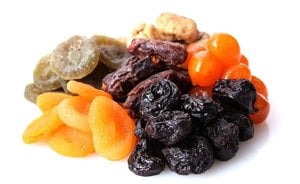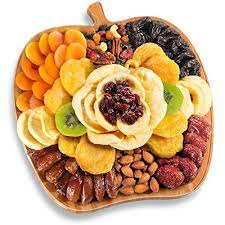10 Smart Things Comprehensive To Maintain Your Brain Healthy



What are carbohydrates? Why are they necessary for health? Simply put, carbohydrates are nothing but the sugar, fiber, and starch found in vegetables, fruits, grains, and other dairy products. Today, some have tarnished their reputation – but they are an important part of a healthy human diet. Carbohydrates are one of the macronutrients; This means that they are one of the three main ways to provide energy to the body (the other two macronutrients are proteins and fats). And remember, carbohydrates are essential for health. They provide fuel and energy needed by the central nervous system and body muscles. Most importantly, they prevent protein from being consumed as a source of body energy. This work also activates the metabolism (fuel) of fats. There are many different issues and unknowns on the subject of carbohydrates; Good carbs and bad carbs. Simple carbohydrates and complex carbohydrates. A little later in this article, we will discuss all of these. But first, let us tell you the foods rich in carbohydrates and the benefits of each one. What are foods rich in carbohydrates? 7. Whole wheat flour a. Consumption size – 120 grams b. Available carbohydrates – 87 grams P. Nutritional value percentage – 29% Whole wheat flour is also an excellent source of fiber, which can prevent many digestive problems, including colon cancer. Whole wheat flour is also rich in B vitamins and folate; And because of this, it has a better reputation compared to white flour. How to include whole wheat flour in the diet You can use whole wheat flour (or its combination with white flour) to bake homemade cookies and cakes. You can also buy bread made from whole wheat flour by checking the product label when buying bread at the grocery store. 8. potato a. Consumption size – 369 grams b. Available carbohydrates – 68 grams P. Nutritional value percentage – 23% Potatoes are an excellent source of potassium, a mineral that is essential for regulating blood pressure levels and thus preventing heart attacks. Potatoes also contain another nutrient called choline, which helps maintain the structure of cell membranes, and can even treat chronic inflammation. Also, potatoes are rich in vitamin C, an important vitamin for maintaining the strength of the body’s immune system. How to include potatoes in the diet You can mix cooked and sliced potatoes with eggs, celery, and some mayonnaise to make a delicious salad. 9. the banana a. Consumption size – 225 grams b. Available carbohydrates – 51 grams P. Nutritional value percentage – 17% Banana is an energizing superfood. Eating a banana before exercise will significantly improve your performance in the gym. The fiber in bananas (pectin and resistant starch) improves the digestive process. And of course, this potassium-rich fruit is also great for heart health. How to include bananas in your diet Prepare a smoothie using bananas and drink it for breakfast. Or you can add bananas to your salad. An even easier way is to eat two whole bananas with breakfast. 10. Pea a. Consumption size – 164 grams b. Available carbohydrates – 45 grams P. Nutritional value percentage – 15% Chickpeas are another great source of protein – one cup of chickpeas contains about 15 grams of protein. Other nutrients found in abundance in chickpeas are folic acid and magnesium. Folic acid helps brain cells connect, and magnesium supports wound healing and bone growth. How to include peas in the diet You can use chickpeas to make an evening soup or dinner, or add a handful of cooked chickpeas to your salad. You can also enjoy adding chickpea puree to your sandwich instead of mayonnaise. 11. nuts a. Consumption size – 144 grams b. Available carbohydrates – 32 grams P. Nutritional value percentage – 11% Almonds, cashews, walnuts, pecans, etc. Nuts are rich in minerals such as magnesium, manganese, and vitamin E – very important nutrients needed for general health. How to include nuts in your diet You can have a cup of nuts in the morning. Or add nuts to your smoothie or breakfast cereal. 12. sweet potato a. Consumption size – 133 grams b. Available carbohydrates – 27 grams P. Percentage of nutritional value – 9 percent Sweet potatoes are full of vitamin A – one medium sweet potato contains about 400% of the daily value for vitamin A. Compared to regular potatoes, sweet potatoes have more nutrients and fewer calories. Vitamin A in vegetables plays an important role in strengthening the body’s immune system, skin, and eye health. How to include sweet potatoes in your diet You can add sweet potatoes to meat and vegetables to benefit from its benefits. You can also use sweet potato puree on your favorite fruit cakes. 13. Orange a. Consumption size – 180 grams b. Available carbohydrates – 21 grams P. Nutritional value percentage – 7% Oranges are an excellent source of vitamin C; So that it provides 130% of the daily requirement for this vitamin. One orange contains more than 170 phytochemicals and more than 60 flavonoids. Mulberry family Are you looking to buy original cosmetics?! (Purchase from Rojashop) Are you looking to buy original cosmetics?! (Purchase from Rojashop) Buy yektanet-logo-sign advertisement a. Consumption size – 150 grams b. Available carbohydrates – 17 grams P. Nutritional value percentage – 6% This family of fruits includes blueberries, strawberries, raspberries, and blackberries. Berries are an excellent source of vitamin C, and at the same time, they are low in sodium, cholesterol, and saturated fat—all of which are great for human health. Regular consumption of berries strengthens the body’s immune system and improves the health of your eyes. How to include berries in the diet Make berries a part of your breakfast. You can also drink them separately with yogurt. Even making smoothies with berries for breakfast and dinner is a great idea.